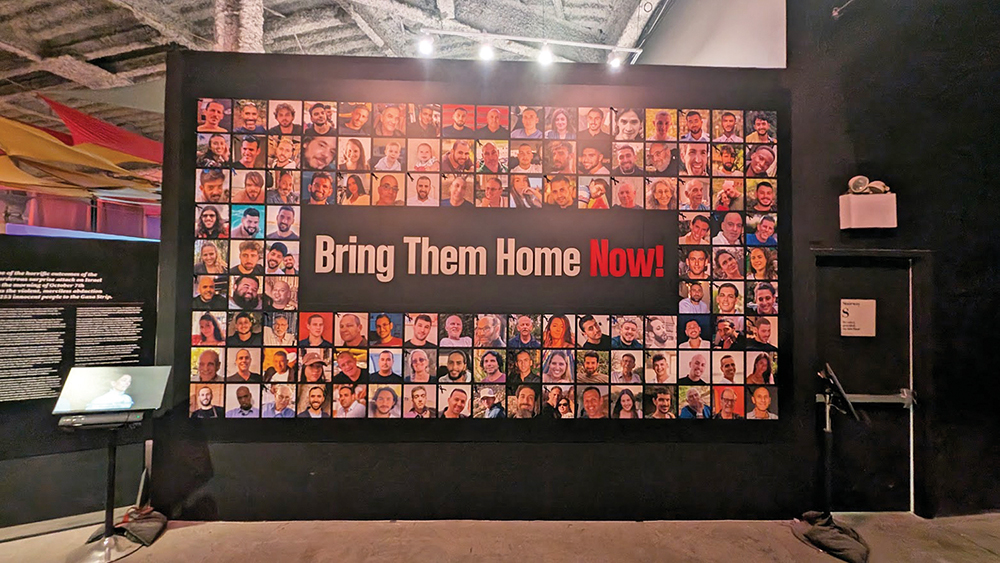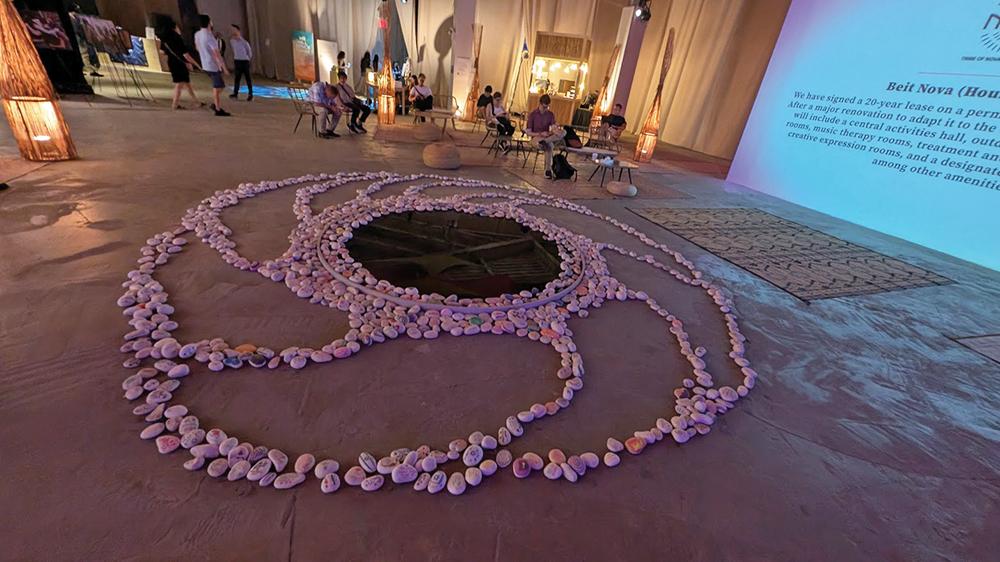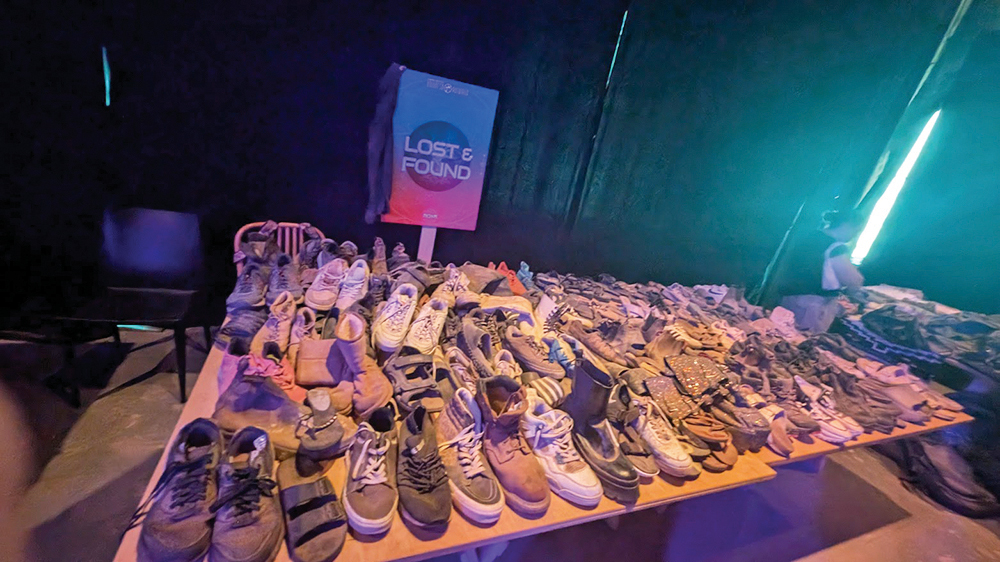
Some visual images are so vivid that their impact on the human mind is indelibly etched, as were those of the Nova Music Festival Exhibition on Wall Street. Just before Nova ended its two-month New York run, I spent several emotionally draining yet uplifting hours slowly navigating through it. Although I had heard about the exhibition, I couldn’t fathom attending.
Why was I hesitant to attend a memorial to the Nova Music Festival, a trance festival held near Kibbutz Re’im, and the hundreds of festival attendees who met untimely deaths? Clearly, the prospect of going alone was daunting. A shared, riveting experience might have had a healing effect. Protests outside the exhibition venue were not the deterrent. My overriding concern was displays of graphic violence. Would shock value figure strongly in the organizers’ toolkit?

As a journalist and media professor, I consult the Society of Professional Journalists’ (SPJ, 2014) Code of Ethics. Minimize Harm is a major precept. “Show compassion for those who may be affected…Use heightened sensitivity when dealing with juveniles, victims of sex crimes…Consider cultural differences in approach and treatment.” The Code’s guidelines for reporters regarding traumatized and vulnerable individuals, including children, are clear. Sometimes, though, the desire to get a “scoop,” rally an audience, or sell tickets (even for good causes) prevails.
Photos of Kobe Bryant’s plane crash site, and the toddler whose body washed up on a Mediterranean shore had been exploitative. Did loved ones and friends of Nova’s dead and survivors know about and agree to their representation in the exhibit? How would it deal with October 7th’s victims?
When I realized that my family would attend, I purchased a ticket, lined up on Wall Street, and eventually met them. After stringent security checks, we joined nearly 40 visitors awaiting entry into a dimly lit, warehouse-sized open space. Although photography was permitted and we could choose which images to record, we had no control over the images projected at us.

At the exhibition’s entrance, a multicolored canopy from the festival housed an oversized video screen. Ecstatic dancers, mostly quite young, some painted, tattooed, and in dazzling outfits, danced through the night. It was a rainbow montage of serenity preceding the horror. The dancers went on until dawn, with some waiting up to see the spectacular sunrise.
Then, in a matter of seconds, horror overtook the serenity, with 364 people murdered. Footage of the early morning assault, taken from the terrorists’ body cams, was projected on video monitors. Artifacts were all around the periphery of one huge, undivided room. They were objects left behind at the festival, a cross-cultural testimony to multi-lingual, and religiously, geographically, and politically diverse participants who were mowed down where harmony was supposed to prevail.
Tents, camping equipment, personal effects and clothing were scattered across the open space, much like they had been placed at the festival. Under other circumstances, the owners of those objects might have left them there to explore the larger festival site, to get food, or to dance—except they never came back.
Further into the exhibition’s interior, there were charred car frames and a shelter, where many attendees sought refuge and were executed. The exhibitions’ videos were distressing, but the cars and shelter more so. One survivor described how she lay, terrified, under the dead, before being rescued.
Several well-organized tables with festivalgoers’ personal effects were on hanging racks and tables at the back of the venue. It was a potpourri of colored wearables, shoes, and accessories. The tables were reminiscent of the US Holocaust Memorial Museum’s and Yad Vashem’s glass-enclosed cases, and images I had seen of objects at Auschwitz. These reflected hundreds of vibrant individuals whose lives were prematurely cut short at Nova. They were disturbing but significant, because the items reflected a prism of colors and shapes that captured their owners’ personalities.
Towards the back of the space, in an alcove, was a profoundly moving display of photos and names of all those murdered at Nova. They represented not just festival attendees who were murdered but also police officers, soldiers, security personnel, and first responders who set out to ensure the safety of participants and lost their lives in the process.
I slowly made my way through the montage plastered on the wall, a cacophony of faces from so many lands, who came to Israel from arba kanfot haAretz—the four corners of the world–and those non-Jews who were also massacred. One looks at their beautiful and hopeful faces, which represent the cultural diversity, open arms, and refuge for which Israel is known, and sees the tragedy of generations to come that have been stymied by hatred and terror.
Along the exit route, a wall dedicated to the hostages was speckled with photos of those kidnapped on October 7 and those confirmed dead, and a video of activist Rachel Goldberg-Polin and her husband, Jonathan Polin. Goldberg-Polin has been lobbying around the globe, on behalf of her son Hersh Goldberg-Polin and the other hostages. The video and wall of hostages are situated diagonally across from the “store” of Nova items (hats, T-shirts, bracelets, and other items), which all benefit the Tribe of Nova Foundation.

My visitor’s journey began with the beauty and calm of October 6, and early morning October 7, moved to the senseless post-dawn horror, and culminated in the final space- a large, open, off-white colored and well-lit room. It was speckled with low back, comfortable chairs and other seating options. In the middle, a circle of stones framed a quiet and contemplative space, and on the opposite wall, a huge screen displayed the Tribe of Nova Community logo. Subsequent screens described how the Tribe of Nova Foundation, begun by the music festival’s organizers, supports the survivors, the families of the bereaved, and those of the hostages. The community provides a safe space for healing, therapy, and other services throughout Israel.
As an American Jew who deeply loves Israel, the exhibition moved me to tears, and to a profound and gnawing sense of loss. Ultimately, the exhibition was anything but a display of gratuitous violence. It was a testament to a senseless devastation—human carnage, with a massive loss of life and potential, that transformed a dawn into darkness.
Despite this, an overarching sense of survivors’ and Israelis’ overall resilience superseded that loss and darkness. “We Will Dance Again” is the exhibition’s mantra. Even the exhibition videos reinforced this mantra, as did the emotive narratives of those who lost loved ones, and those of the organizers, whose dreams for the festival were turned upside down. May they, and we, all dance again.
Rachel Kovacs is an Adjunct Associate Professor of communication at CUNY, a PR professional, theater reviewer for offoffonline.com—and a Judaics teacher. She trained in performance at Brandeis and Manchester Universities, Sharon Playhouse, and the American Academy of Dramatic Arts. She can be reached at mediahappenings@gmail.com.









